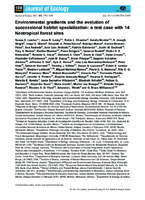| dc.contributor.author | Quesada-Monge, Ruperto | |
| dc.contributor.author | Letcher, Susan | |
| dc.contributor.author | Lasky, Jesse | |
| dc.contributor.author | Chazdon, Robin | |
| dc.contributor.author | Norden, Natalia | |
| dc.contributor.author | Wright, Joseph | |
| dc.contributor.author | Meave, Jorge | |
| dc.contributor.author | Muñoz, Rodrigo | |
| dc.contributor.author | Romero-Pérez, Eunice | |
| dc.contributor.author | Andrade, Ana | |
| dc.contributor.author | Andrade, José Luis | |
| dc.contributor.author | Balvanera, Patricia | |
| dc.contributor.author | Becknell, Justin | |
| dc.contributor.author | Bentos, Tony | |
| dc.contributor.author | Radika, Bhaskar | |
| dc.contributor.author | Bongers, Frans | |
| dc.contributor.author | Boukili, Vanessa | |
| dc.contributor.author | Brancalion, Pedro | |
| dc.contributor.author | César, Ricardo | |
| dc.contributor.author | Clark, Deborah | |
| dc.contributor.author | Clark, David | |
| dc.contributor.author | Craven, Dylan | |
| dc.contributor.author | DeFrancesco, Alexander | |
| dc.contributor.author | Dupuy, Juan | |
| dc.contributor.author | Finegan, Bryan | |
| dc.contributor.author | Pérez-García, Eduardo | |
| dc.contributor.author | González-Jiménez, Eugenio | |
| dc.contributor.author | Hall, Jefferson | |
| dc.contributor.author | Harms, Kyle | |
| dc.contributor.author | Hernández-Stefanoni, José Luis | |
| dc.contributor.author | Hietz, Peter | |
| dc.contributor.author | Kennard, Deborah | |
| dc.contributor.author | Killeen, Timothy | |
| dc.contributor.author | Susan, Laurance | |
| dc.contributor.author | Lebrija-Trejos, Edwin | |
| dc.contributor.author | Lohbeck, Madelon | |
| dc.contributor.author | Martínez-Ramos, Miguel | |
| dc.contributor.author | Massoca, Paulo | |
| dc.contributor.author | Mesquita, Rita | |
| dc.contributor.author | Mora, Francisco | |
| dc.contributor.author | Muscarella, Robert | |
| dc.contributor.author | Paz, Horacio | |
| dc.contributor.author | Pineda-García, Fernando | |
| dc.contributor.author | Powers, Jennifer | |
| dc.contributor.author | Rodríguez, Ricardo | |
| dc.contributor.author | Sandor, Manette | |
| dc.contributor.author | Sanaphre-Villanueva, Lucía | |
| dc.contributor.author | Schüller, Elisabeth | |
| dc.contributor.author | Swenson, Nathan | |
| dc.contributor.author | Tauro, Alejandra | |
| dc.contributor.author | Uriarte, María | |
| dc.contributor.author | Van-Breugel, Michiel | |
| dc.contributor.author | Vargas-Ramírez, Orlando | |
| dc.contributor.author | Viani, Ricardo | |
| dc.contributor.author | Wendt, Amanda | |
| dc.contributor.author | Williamson, Bruce | |
| dc.date.accessioned | 2017-06-07T18:01:38Z | |
| dc.date.available | 2017-06-07T18:01:38Z | |
| dc.date.issued | 2015-09 | |
| dc.identifier | https://onlinelibrary.wiley.com/doi/10.1111/1365-2745.12435/epdf | es |
| dc.identifier.issn | 00220477 | |
| dc.identifier.uri | https://hdl.handle.net/2238/7214 | |
| dc.description | https://www.scopus.com/inward/record.url?eid=2-s2.0-84939570316&partnerID=40&md5=fcadae8e6c274e8b7efca96099304a7c | es |
| dc.description.abstract | Successional gradients are ubiquitous in nature, yet few studies have systematically examined the evolutionary origins of taxa that specialize at different successional stages. Here we quantify successional habitat specialization in Neotropical forest trees and evaluate its evolutionary lability along a precipitation gradient. Theoretically, successional habitat specialization should be more evolutionarily conserved in wet forests than in dry forests due to more extreme microenvironmental differentiation between early and late-successional stages in wet forest. We applied a robust multinomial classification model to samples of primary and secondary forest trees from 14 Neotropical lowland forest sites spanning a precipitation gradient from 788 to 4000 mm annual rainfall, identifying species that are old-growth specialists and secondary forest specialists in each site. We constructed phylogenies for the classified taxa at each site and for the entire set of classified taxa and tested whether successional habitat specialization is phylogenetically conserved. We further investigated differences in the functional traits of species specializing in secondary vs. old-growth forest along the precipitation gradient, expecting different trait associations with secondary forest specialists in wet vs. dry forests since water availability is more limiting in dry forests and light availability more limiting in wet forests. Successional habitat specialization is non-randomly distributed in the angiosperm phylogeny, with a tendency towards phylogenetic conservatism overall and a trend towards stronger conservatism in wet forests than in dry forests. However, the specialists come from all the major branches of the angiosperm phylogeny, and very few functional traits showed any consistent relationships with successional habitat specialization in either wet or dry forests. Synthesis. The niche conservatism evident in the habitat specialization of Neotropical trees suggests a role for radiation into different successional habitats in the evolution of species-rich genera, though the diversity of functional traits that lead to success in different successional habitats complicates analyses at the community scale. Examining the distribution of particular lineages with respect to successional gradients may provide more insight into the role of successional habitat specialization in the evolution of species-rich taxa. | es |
| dc.language.iso | eng | es |
| dc.publisher | Blackwell Publishing Ltd | es |
| dc.rights | acceso abierto | es |
| dc.rights.uri | https://creativecommons.org/licenses/by-nc/3.0/cr/ | * |
| dc.source | Journal of Ecology 2015, 103, 1276–1290 | es |
| dc.subject | Ecosistemas | es |
| dc.subject | Filogenética | es |
| dc.subject | Bosques | es |
| dc.subject | Especies pioneras | es |
| dc.subject | Research Subject Categories::NATURAL SCIENCES::Biology::Cell and molecular biology::Genetics | es |
| dc.subject | Ecosystems | |
| dc.subject | Phylogenetics | |
| dc.subject | Forests | |
| dc.subject | Pioneer species | |
| dc.subject | Árboles neotropicales | |
| dc.subject | Neotropical trees | |
| dc.title | Environmental gradients and the evolution of successional habitat specialization: a test case with 14 neotropical forest sites | es |
| dc.type | artículo original | es |



